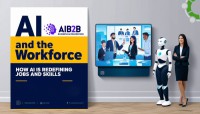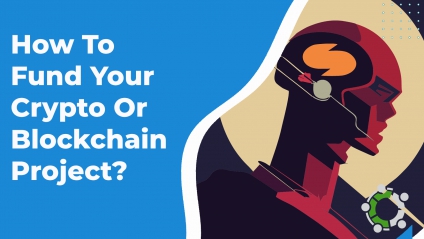MONETIZE & BOOST CONTENT
Monetizing your FREE webinars and related content has never been easier. Use our platform to list your events and onboard new affiliates as well as guests. Earn $1.00 for each new guest you onboard, share up to 70% of tipping and membership revenues and promote your webinar(s) to reach new global markets.
Drive earnings and expand reach to include listing of your webinar on upto 6,000 + event calendars, blogs and social media groups.
NINE MONETIZATION BENEFITS
- Earn $1 for each new collaborator/registration
- Share up to 70% of tipping revenues
- Share up to 12.5% of e-commerce revenues
- Share up to 50% of membership upgrades
- Share up to 30% of hosting upgrades
- Share up to 12.5% of your team's earnings
- Transform supporters into your affiliates
- Build viral fan networks
- Identify affiliates to promote your webinars
Save & Earn $10K Per Month
A.I Is Not Taking Your Job, Your Boss Is - Getting to Know Your Way Around A.I.
Build CollaborateArtificial Intelligence (A.I) has become a buzzword in today’s society, often accompanied by fears of job loss and economic upheaval. However, the narrative that A.I will take away jobs oversimplifies a more complex issue at play: the balance of power between employers and workers. The following is being written in an effort to make clearer the realities of A.I, the labor market, and the role of policy decisions in shaping our economic landscape.
A.I for Beginners
A.I (Artificial Intelligence) refers to the ability of machines to perform tasks that typically require human intelligence, such as reasoning, problem-solving, and learning. While it is arguable that there is no real intelligence involved in A.I; that it is only the collection of a massive volume of information, with the ability to process it faster than most human minds, A.I is becoming the new machine minds. Again, while A.I has the potential to streamline processes and enhance productivity, it’s essential to recognize that the implications of A.I on employment are not solely about technology but are deeply intertwined with economic and social structures.
Understanding Wage Growth and Labor Market Dynamics
For decades, wage growth for most workers has stagnated, not primarily because of technological advances, but due to intentional policy decisions that have created a significant power imbalance in the labor market. Factors like the decline of labor unions, stagnant minimum wage laws, and shifts in macro-economic policies have all contributed to this imbalance.
Economists often link technology to productivity, a measure of output per hour of work. However, data shows that productivity growth does not always correlate with increased unemployment or wage inequality. In fact, periods of rapid technological advancement, like the rise of the internet in the 1990s, coincided with improved job opportunities and wage growth for many workers.
The Real Issues Behind Wage Stagnation
The root causes of sluggish wage growth lie in the vast difference, the grand canyon of power dynamics between employers and workers. The narrative that attributes wage stagnation to A.I. and technology distracts from the real culprits: policy decisions that favor corporate interests over worker rights.
For instance, while A.I can optimize processes and improve efficiency, it can also be utilized by employers to increase control over labor, further undermining workers' bargaining power. An example of which is, take any major banking chain and you will find a growing dismissal of client service in favor of machine service. Therefore, focusing solely on A.I. as the threat to employment is misleading; it is the systemic issues within the labor market that require our attention.
Policy Responses to Labor Market Challenges
To effectively address the challenges faced by workers in an evolving labor market, governments and policy makers of large employers must focus on empowering workers rather than micromanaging A.I technologies. This includes enhancing workers’ rights to organize, increasing minimum wage standards, and maintaining lower unemployment rates. Such measures will help restore balance and ensure that advancements in technology benefit all, not just a select few.
The Importance of Worker Empowerment
It’s important to understand that A.I, like any technology, is a tool. Its impact on the labor market depends significantly on how it is utilized. If employers wield A.I to focus only on productivity while simultaneously exerting greater control over wages and working conditions, workers will suffer. Conversely, in a balanced labor market where workers have strong representation and bargaining power, A.I has the potential to elevate customer experience while improving job satisfaction.
Shifting the Focus from A.I to Economic Policy
Rather than getting caught up in the fears surrounding A.I, it’s essential to advocate for policies that empower workers. By understanding the deeper issues of labor market dysfunction, we can push for reforms that truly address wage disparity and or inequality. Policies should focus on empowering workers, improving social safety nets and dismantling barriers to unionization.
The Future of Work in an A.I World
Looking ahead, the integration of A.I into various industries will likely continue to evolve. Workers will need to adapt and acquire new skills to thrive in this changing landscape. Education and training programs should be prioritized to ensure that workers can navigate this new terrain, enabling them to take full advantage of technological advancements without fear of displacement. As independent revenue earners, it will become vital to learn how to work and live with the changing world of A.I technology.
Final Thoughts
The conversation around A.I and its impact on jobs must quickly change from the present overly simplistic view of technology as a threat to a less confrontational, more nuanced understanding of the global economic and corporate policy-driven factors at play. By advocating for a balanced labor market and empowering workers, we can harness the potential of A.I to create a more equitable, less stressful, healthier future.
In this landscape, valuable resources exist to further explore these topics. For instance, websites like Life Off the Pitch offer insightful articles that delve into the intersections of technology and labor, while the Kenti Dream Series provides on-demand content that can help you understand, not only the future of work but more so, the possibility of securing future revenues. Additionally, engaging with platforms like PMN Social Media Rewards Platform, can facilitate social media sharing and revenue building, fostering a community focused on meaningful change in the labor market.
By staying informed and engaged, you can become part of the conversation that shapes the future of work, ensuring that advancements in A.I serve the interests of all workers, not just the corporate elite. Stay tuned for more updates on these critical issues, and together, let’s advocate for a brighter future in the workforce.
Breathe Better, Live Better: Why Nasal Breathing Is the Gold..
Build Collaborate
105 Views 3 days ago
The Hidden Flaws of Crypto: Why the Industry Is Failing to D..
Build Collaborate
154 Views 4 days ago
How To Make Money With Social Rewards Technology? #NFT #Adve..
Build Collaborate
785.6K Views 2 years ago
AI Can Compose Music & Create Amazing Art: Exploring the Cre..
Build Collaborate
473.5K Views 1 year ago
Innovating The Way You Network & Monetize Online With Social..
Build Collaborate
227.3K Views 1 year ago
Why AI is the Greatest Invention of the Last Century: Transf..
Build Collaborate
99.5K Views 1 year ago
How Can You Fund Your Crypto Or Blockchain Project: Explorin..
Build Collaborate
97.7K Views 1 year ago
MONETIZE & BOOST CONTENT
Monetizing your FREE webinars and related content has never been easier. Use our platform to list your events and onboard new affiliates as well as guests. Earn $1.00 for each new guest you onboard, share up to 70% of tipping and membership revenues and promote your webinar(s) to reach new global markets.
Drive earnings and expand reach to include listing of your webinar on upto 6,000 + event calendars, blogs and social media groups.
NINE MONETIZATION BENEFITS
- Earn $1 for each new collaborator/registration
- Share up to 70% of tipping revenues
- Share up to 12.5% of e-commerce revenues
- Share up to 50% of membership upgrades
- Share up to 30% of hosting upgrades
- Share up to 12.5% of your team's earnings
- Transform supporters into your affiliates
- Build viral fan networks
- Identify affiliates to promote your webinars
Activate Tipping, Donations & Social Rewards
Register Now
Support This Creator
Thank you [ Name of Creator ]
Email:
COPY TEXT BELOW, OPEN EMAIL CLIENT, CREATE NEW MESSAGE, PASTE TEXT FROM CLIPBOARD & SEND MESSAGE
I thought you might be interested in this content/opportunity:
You can review at
Whatsapp:
COPY TEXT BELOW, OPEN WHATSAPP, CREATE NEW MESSAGE, PASTE TEXT FROM CLIPBOARD & SEND MESSAGE
I thought you might be interested in this content/opportunity:
You can review at
Instagram:
COPY TEXT BELOW, OPEN INSTAGRAM& CREATE NEW DIRECT MESSAGE, PASTE TEXT FROM CLIPBOARD & SEND MESSAGE
I thought you might be interested in this content/opportunity:
You can review at
Skype:
COPY TEXT BELOW, OPEN SKYPE& CREATE NEW DIRECT MESSAGE, PASTE TEXT FROM CLIPBOARD & SEND MESSAGE
I thought you might be interested in this content/opportunity:
You can review at
Snapchat:
COPY TEXT BELOW, OPEN SNAPCHAT, CREATE NEW CHAT, PASTE TEXT FROM CLIPBOARD & SEND MESSAGE
I thought you might be interested in this content/opportunity:
You can review at
%20(1).jpg)


















